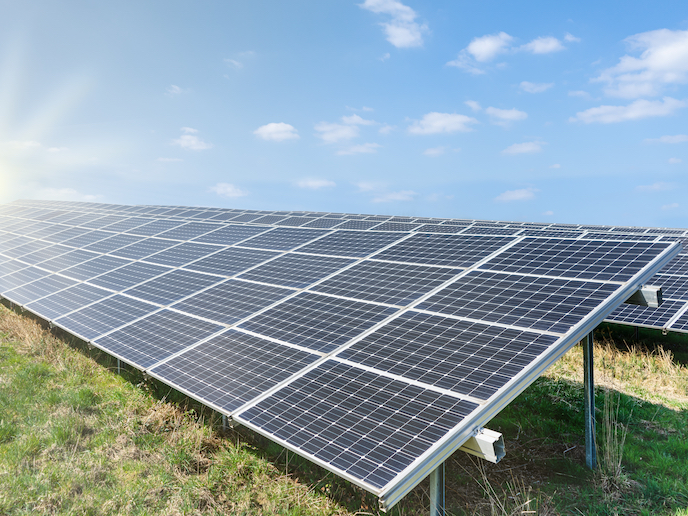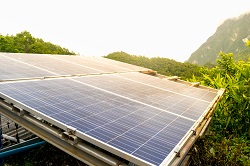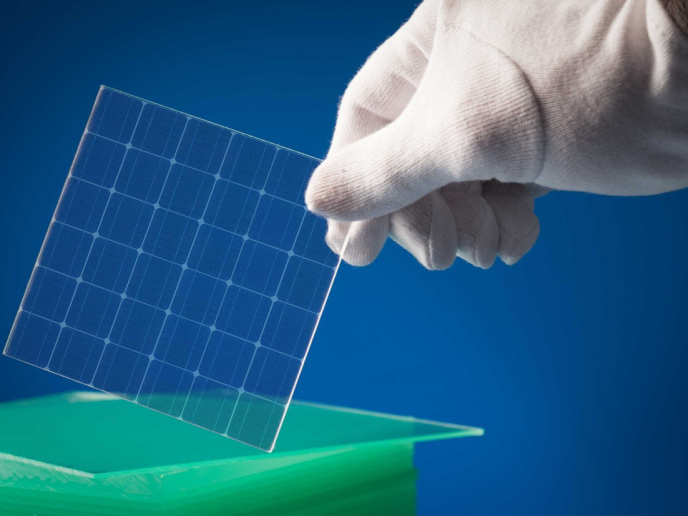Bringing perovskite solar cells closer to commercialisation
Perovskite solar cells are a disruptive breakthrough technology which could herald a huge advance in green energy. The photovoltaic (PV) industry is currently dominated by silicon-based technology, yet solar cells based on perovskites – a family of man-made crystals – could dramatically shift this paradigm, potentially yielding far higher efficiency at a fraction of the cost. Perovskite PV cells use an ultra-thin layer of semiconductor material, and currently deliver a performance of up to 25.7 %, almost at the 26.7 % level reached by silicon during the last six decades of R&D. Perovskite achieved this milestone in just a decade. Although these solar cells have become remarkably efficient so quickly, several hurdles remain before they can become a competitive solar technology in commercial markets. One major issue is that perovskites are susceptible to environmental damage and prone to degradation. To protect them, researchers cover the solar cells with 2D materials known as transition metal dichalcogenides – semiconducting atom-thick layers made from material similar to graphene. These layers increase the stability and performance of the solar cells, improving electrical communication. “This in turn improves the voltage and thus performance of the device,” says Shahzada Ahmad, professor at BCMaterials, University of the Basque Country. These 2D materials have poor vertical conductivity however, meaning they cannot be used in multilayers to create stable, high-efficiency perovskite solar cells.
Introducing the interlayer and innovative molecules
In the EU-funded SMILIES project, Ahmad and colleagues have worked to overcome this challenge, using molecules to bridge the electrical connectivity gap and improve vertical conductivity. “We introduce a layer that’s just a few atoms thick, placed on a perovskite. This minimises the energy barrier and charge accumulation at the interface, to intensify the extraction of charges and improve charge transfer dynamics,” explains Ahmad, SMILIES project coordinator. This research was undertaken with the support of the Marie Skłodowska-Curie Actions programme.
Testing the new molecule layer
Through the SMILIES project, the team ran several trials on their new technology, while improving the stability of the solar cells and working to reduce the overall costs. “Our lab results from trials are quite successful and reproducible,” remarks Ahmad. “We also published a protocol paper, freely available, so that anybody can reproduce the work and learn how to fabricate solar cells.” The team also analysed the working mechanisms of the device, using admittance spectroscopy, a method that measures the transfer of charge. They used machine learning to predict how the perovskites would work, as well as the new layers. Overall, their success meant that they could increase the reliability in a perovskite cell, measured under real conditions.
A versatile technology
“Perovskite solar cells use a tiny amount of material,” adds Ahmad. “The thickness of the device is less than 1 micron, and the thickness of perovskite is close to 500 nm. Perovskites can be deposited from solution, so they can be fabricated at lower establishment and manufacturing cost.” This means perovskites could even be made into ink, printed using normal printing technology, woven into fabrics, or even added into building materials. Ahmad will continue working on the technology with the support of an European Research Council grant. “We are optimising the interface with various innovative materials other than graphene. The interface is very important, as it is ‘the heart’ of any electrical device,” he says.
Keywords
SMILIES, solar, perovskite, commercial, markets, layer, charge







